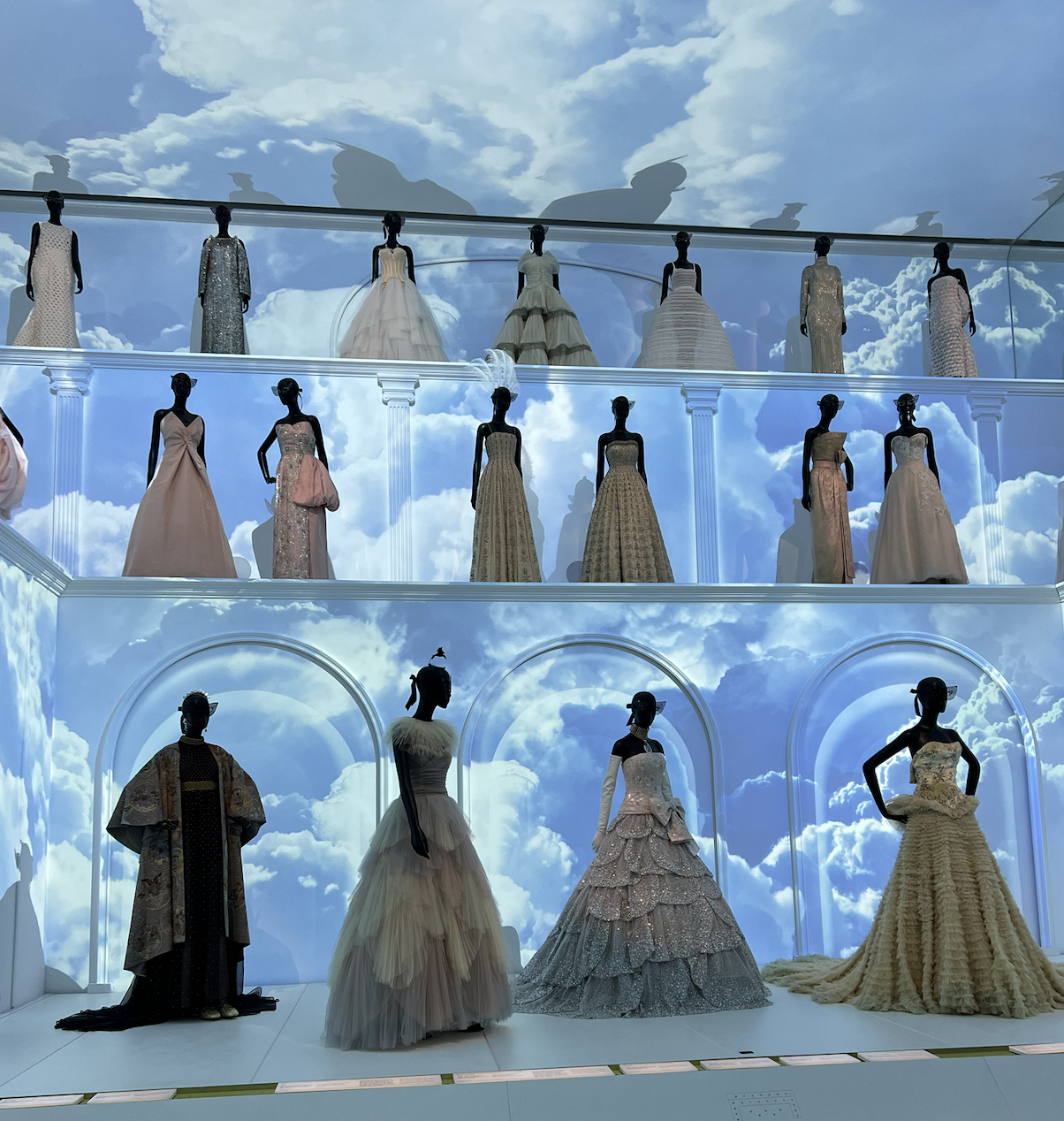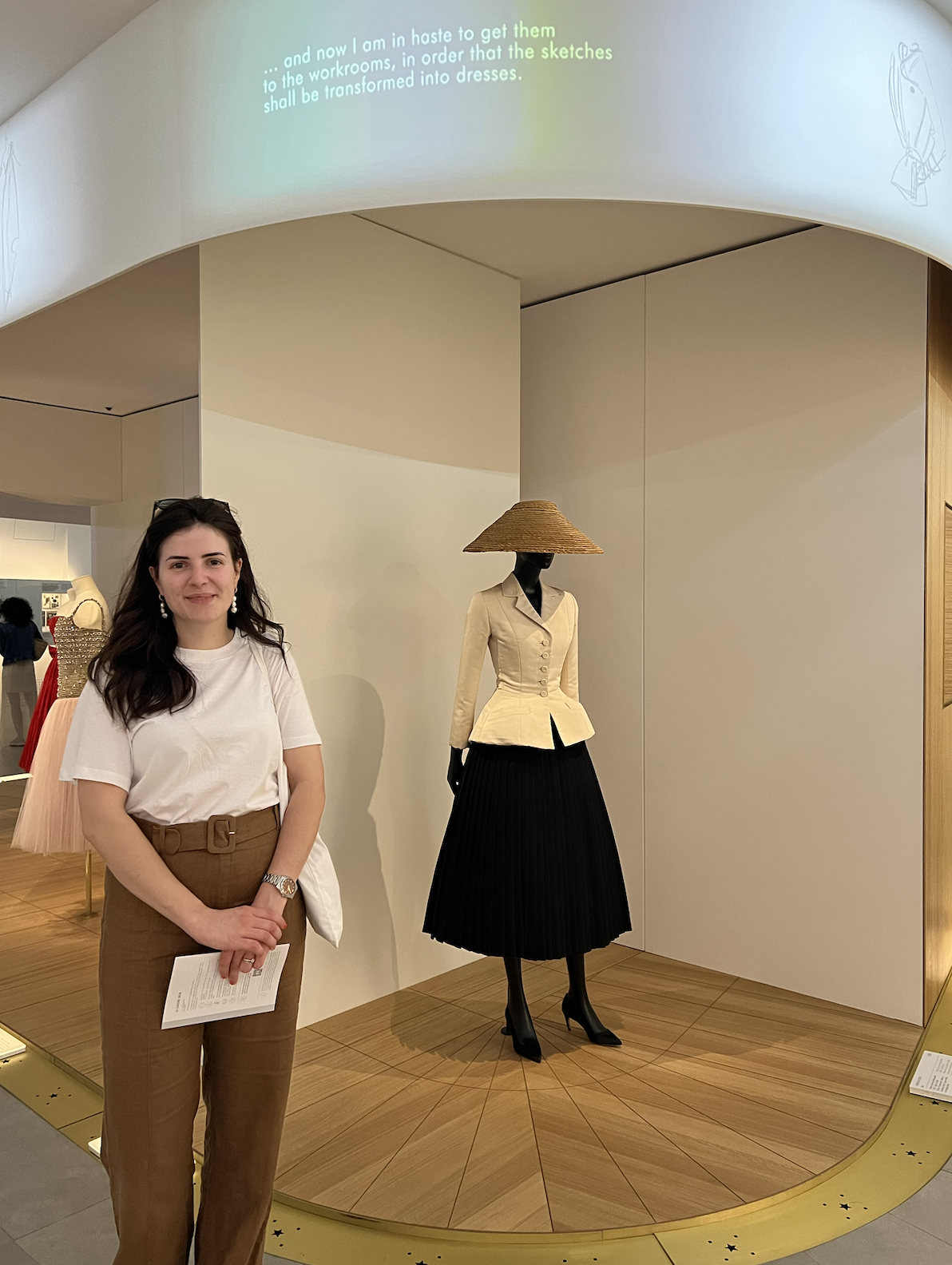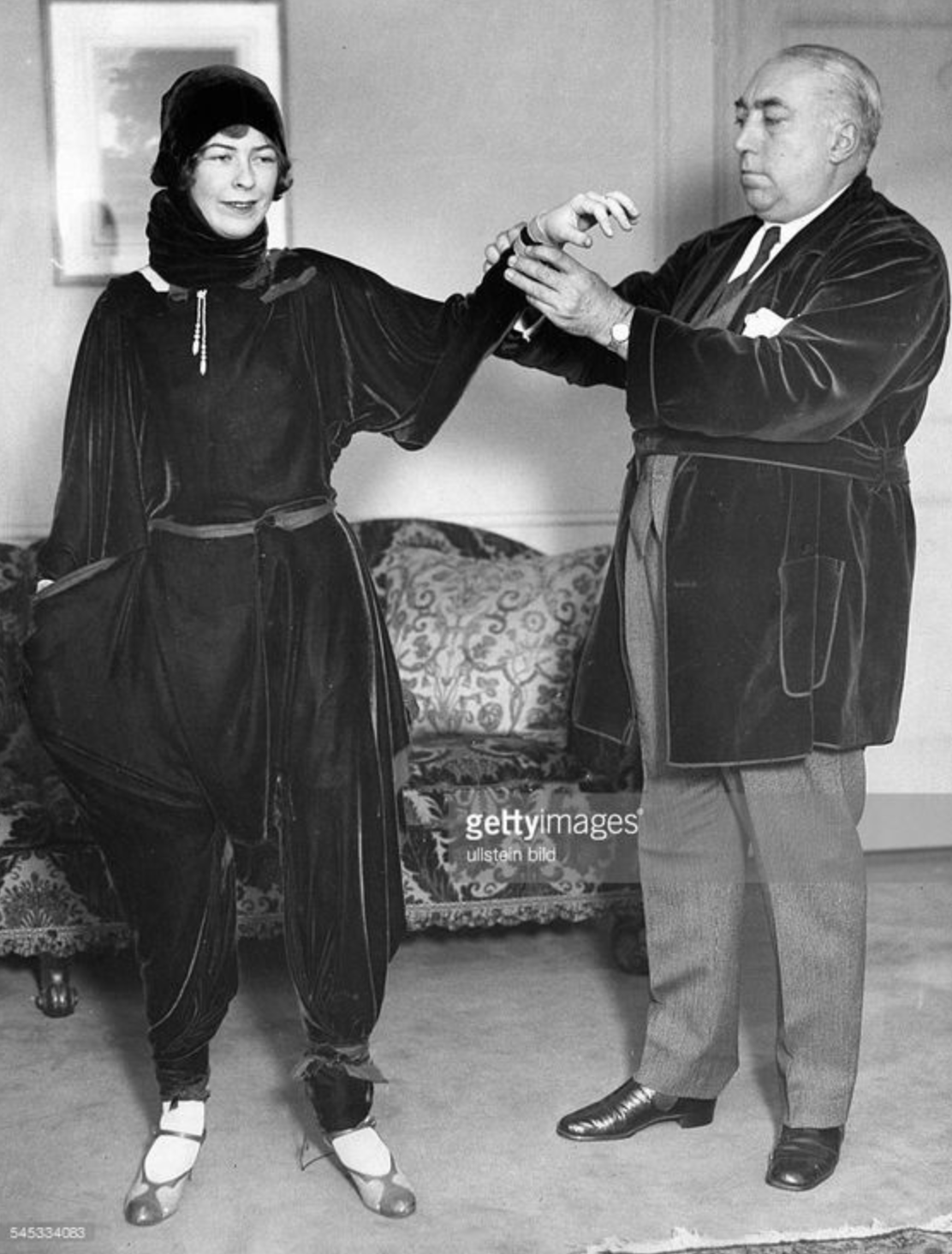Christian Dior Couture: from New Look to Muguet, the Fascinating History of the House
Dior... J'adore! I think every Haute-Couture fan know this Dior's advertisement slogan. Dior is a mythical house that started around officially on the 12 February 1947. If everyone knows Dior classic bags such as the Lady Dior or the more recent Saddle reedition, Dior was initially funded around a passion for... flowers. Christian Dior had an deep love for flowers: the smell, the touch and what he could do with it.
Let's dive in what make Dior such a house-hold name and a success story over the years from Christian Dior himself to various Artistic Director such as Maria Grazia Chiuri in Dior recent year.
Christian Dior Museum in Paris, 30 Avenue Montaigne
How did Christian Dior got into Fashion?
Before fashion, Christian was mostly a heir to a family that owned a malodorous fertilizer factory in Granville Normandy in France. Young Christian Dior made his debut as a fashion designer for Parisian couturiers. He learned the craft of pattern-making from the designer Lucien Lelong.
Lucien Lelong was a french who was prominent from the 1920s to the 1940s. His parents socialized with great fashion designers such as Jeanne Lanvin or Paul Poiret, who undoubtedly passed on their love for fashion to him. Lucien then takes over the activities of the family couture house with a lot of success. During his time in Lucien Lelong Maison de Couture, Christian Dior didn't get unnoticed. His talent and his unique drawing style, drawn the attention of Marcel Boussac. This was an enormous opportunity for the young Christian Dior as Marcel Boussac was then leading a group of 16,000 people and was considered the richest man in France during the 1940's period. So you can imagine the kind of opportunity that it was for Christian Dior. He was what we would call this day a 'Business Angel'.
"A dress as I conceive it is an ephemeral architecture, intended to exalt the proportions of the female body."
Christian Dior
Marcel Boussac goal wanted to recruit someone capable revive his Maison de Couture: Philippe et Gaston. Eventually, Christian Dior convinced him to let him create his own house under the name Dior and the first collection was released in 1947. And this is when it all begins...
Christian Dior drawing
Rapidly, Dior with his opulent style produced successful collections. As a comparaison, Coco Chanel was also in the fashion game at this same time but didn't encounter the same success as Christian Dior, until later on. During the war, she exiled in Switzerland and was watching from a far eyes, Christian's Dior success all around Paris.
Christian Dior opens 30 avenue Montaigne in Paris
So in 1947, naturally, Christian Dior chosed what is now known as THE boutique, Dior's ateliers in Avenue Montaigne. The same year, Christian Dior presented his very first collection, un défilé Haute Couture that he called New Look. The show had a spectacular success and immediately captivated the entire world.
Paul Poiret tailleur pantalon creation
credit photo: Getty images
During these 10 years as the head of Christian Dior Couture he achieved a lot in terms of innovation and fashion. He created an elegant long style that brought women back into feminity after such darkness time during the war. In opposition from Paul Poiret who liberated women's with the tailleur-pantalon (aka pantsuit) that he introduced in the early 20s, Dior wanted more than anything women to be feminine and bring back the dresses. In opposition to Coco Chanel style, Dior was all about color and materials whereas in contrast, Coco Chanel invented the "little black dress" or the very classic Chanel suit.
Christian Dior Fashion Show in 1969
Disclaimer: I don't support the fur showed in that fashion show in any case animal should be use to make garnement. However my idea here is to give you a insight on a Christian Dior show in the 70's Parisian era.
Christian Dior Iconique creations
If the notion of silhouettes existed in the world of fashion before the arrival of Christian Dior, it was he who made it a central concept. With each new collection, he created a new line. Depending on the body type, the silhouette took the name of a letter: A, H, or Y. The designer imagined new silhouettes such as Corolle and En 8 just to name a few.
The New Look
Credit photo: Associations Willy Maywald _ ADAGP
First of all, the New Look collection was all about introducing a new silhouette where Christian Dior loves to play with volume and proportion. Sloped shoulder, raised bustline, narrowed waist, and a monumental volume of skirt falling away... Le tailleur Bar was the most iconic of the entire collection that Dior presented in 1947. For this jacket, Dior was inspired by the shapes of the feminine body. 500 hours of work were necessary to create this tailleur. It required 12 meters of fabric and 3 meters of percale and taffeta lining for the creation of the skirt. So you can imagine the craft-manship required to achieve such a unique look. This look was presented wearing a small black tambourine on his head, gloves and fine, slender shoes.
"I can admit that on the eve of the first collection, that of the New Look, if I had been asked what I had done and what I hoped for,
I certainly would not have talked about a revolution. I could not foresee the reception that it would receive, since I had little imagined it, having only tried to do my best."
Christian Dior
The A-line silhouette
Spring 1955's A-line collection was the first time someone came up with that term in the fashion world. By naming his 1955 collection "A-line" Christian Dior created a whole new dress shape.
With its undefined waist and smooth silhouette that widened over the hips and legs, resembled a capital "A". These days the term "A-line" is used to describe dresses and coat with a similar shape. This elegant and feminine style became very popular and was imitated by many other designers such as Dior's successor Yves Saint Laurent with his "Trapeze Line" of spring 1958. Although A-line clothing was popular in the 1960s and 70s, it fell out of fashion by the early 1980s and was only revived with the retro trend of the late 1990s.
Visit the Galerie Dior's website to learn everything about the creation of the A-line shape.
The H-line silhouette
From 1954 à 1957, Dior introduced the H-line silhouette, which featured straight lines and a flat, unstructured look. This minimalist style was intended to be a reaction to the excesses of the previous decade and helped to pave the way for the more streamlined styles of the 1960s. With the H-line silhouette, the waist seems to disappear and the curves are noticeably smoothed out.
Photographed by Henry Clarke,
Vogue, September 1951
Lady Dior handbag
Originally introduced in 1995, the Lady Dior handbag quickly became an icon of the brand. It features the signature quilted pattern and is adorned with a dangling "D.I.O.R." charm.
In 1995, Bernadette Chirac (France first lady at the time) wished to give the Princess of Wales a unique handbag. This bag appeared was on the arm of Lady Diana, Princess of Wales during her Parisian adventure. That's from this moment that bag got its very own name: Lady Dior.
The bag itself is very classic with a rectangular shape. The cannage and the Dior charms are the called in French grigri and refere to Christian Dior supersitision. These elements are an hommage of the charms that Monsieur Dior always kept with him. The Cannage motif, a signature design of the house, has its roots in the Napoleon III chairs that Christian Dior arranged for attendees at his fashion shows. Season after season the Lady Dior has been re imagined but its timeless elegance exudes from the soft lambskin and rounded handles and is now available in all sizes and colors: from Mini to Maxi.
Dior VIII watch - Christian Dior Couture
It's not very well known but Christian Dior was very superstitious. That's why the brand has so many symbols that you can still find everywhere today: the bee, the star, clover...
His first atelier was located in the 8e arrondissement of Paris and counted 8 floors... a symbole for Dior that probably inspired him his collection the 8 line. This is why the watch Dior VIII was created in reference to that lucky number.
In fact, Dior carried a bunch of lucky charms with him. Thus, his charm collection never left him - a sprig of dried lily of the valley in an ornate reliquary, a four-leaf clover, the star found on Rue Saint-Honoré, two hearts, a piece of wood, and another in gold.
His lucky flower, lily of the valley, is so symbolic for Chrisitian Dior. Dior was inspired by the lily of the valley in various ways. He had a dried sprig sewn onto the hem of each of his creations, wore it as a boutonniere and gave it as a gift on May 1st. The flower also inspired his Spring 1954 collection, including the famous Lily of the Valley Dress, which he described as young, supple, and simple. He was so fond of the flower that he arranged for his florist to have it available all year round.
Did you know that Christian Dior actually wanted to be an architect initially? During one of his conference at Sorbonne University in 1948, he explains that in the end, there is similarities between being a designer and an architect: you build the architecture of a dress.
Yves Saint Laurent, Artistic Director at Christian Dior Couture
In October 24, 1957 Christian Dior was victim of a sudden cardiac arrest. He past away 10 years after he started Christian Dior Couture.
Marcel Boussac, the owner of Christian Dior Couture choose a new Artistic Director: Yves Saint Laurent. This is how it all started for the young designer.
This period feels like a "renewal" with previous successful designer like Coco Chanel and Christian Dior who left forever a their stain on the Household name they created that are now multibillion dollars empire.
Overall, Christian Dior's designs for women during his tenure as head of Christian Dior Couture were characterized by their elegance, femininity, and timeless appeal. His creations helped to shape the fashion industry in the mid-twentieth century. They still continue to inspire designers today.
Hope you enjoyed that article as much as I loved writing it and showing you how all the couturier who have marked fashion history for ever.









